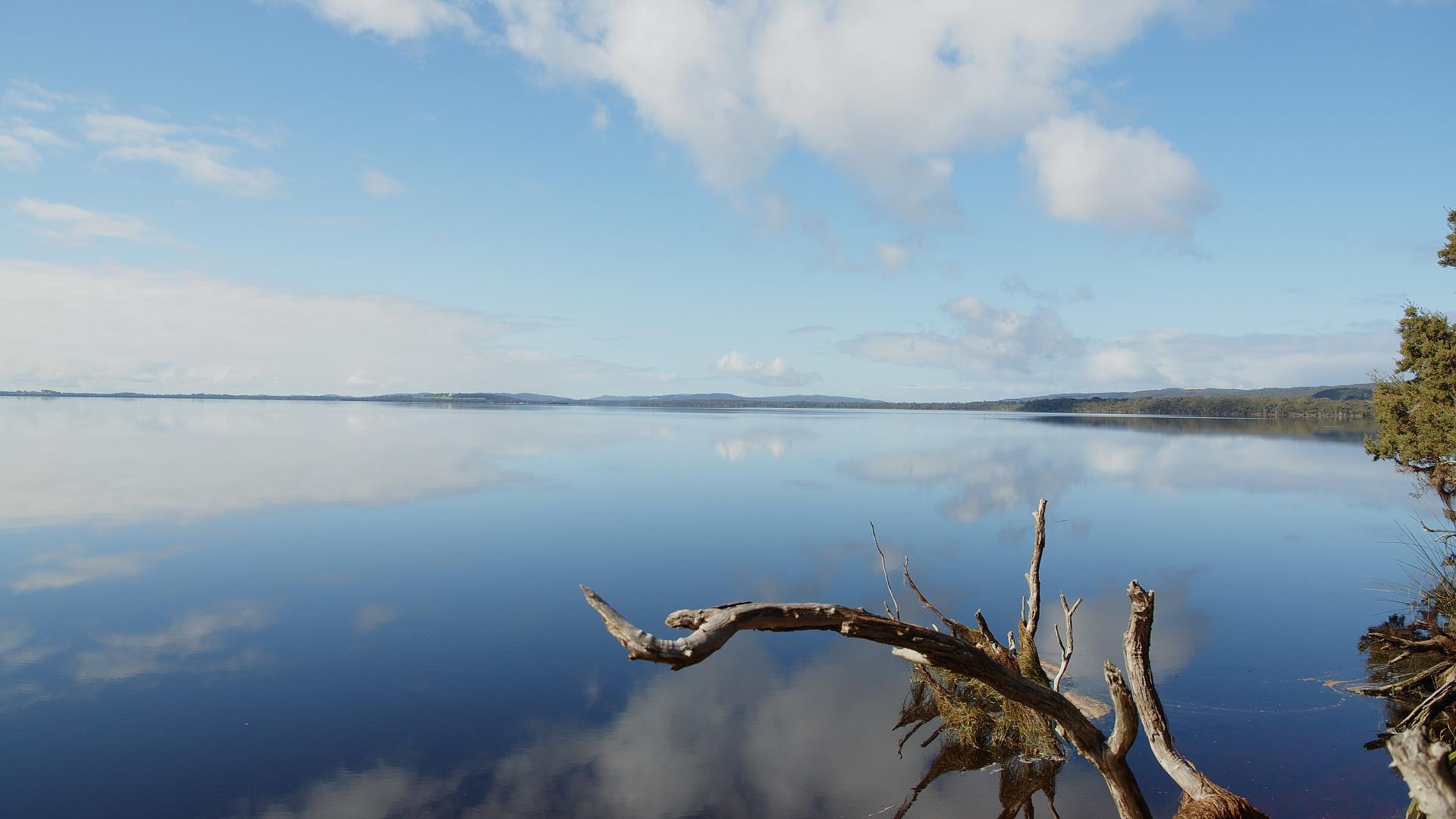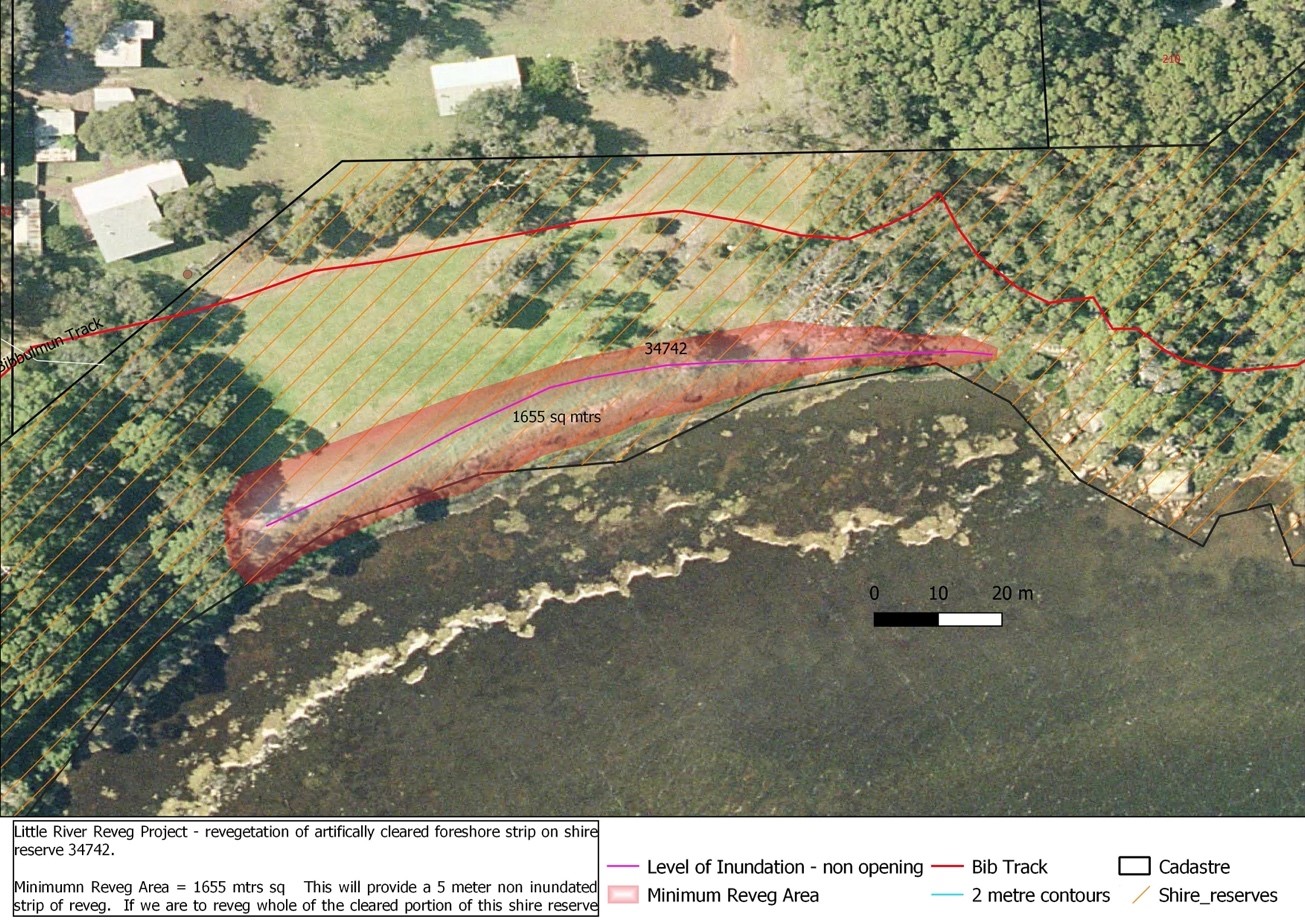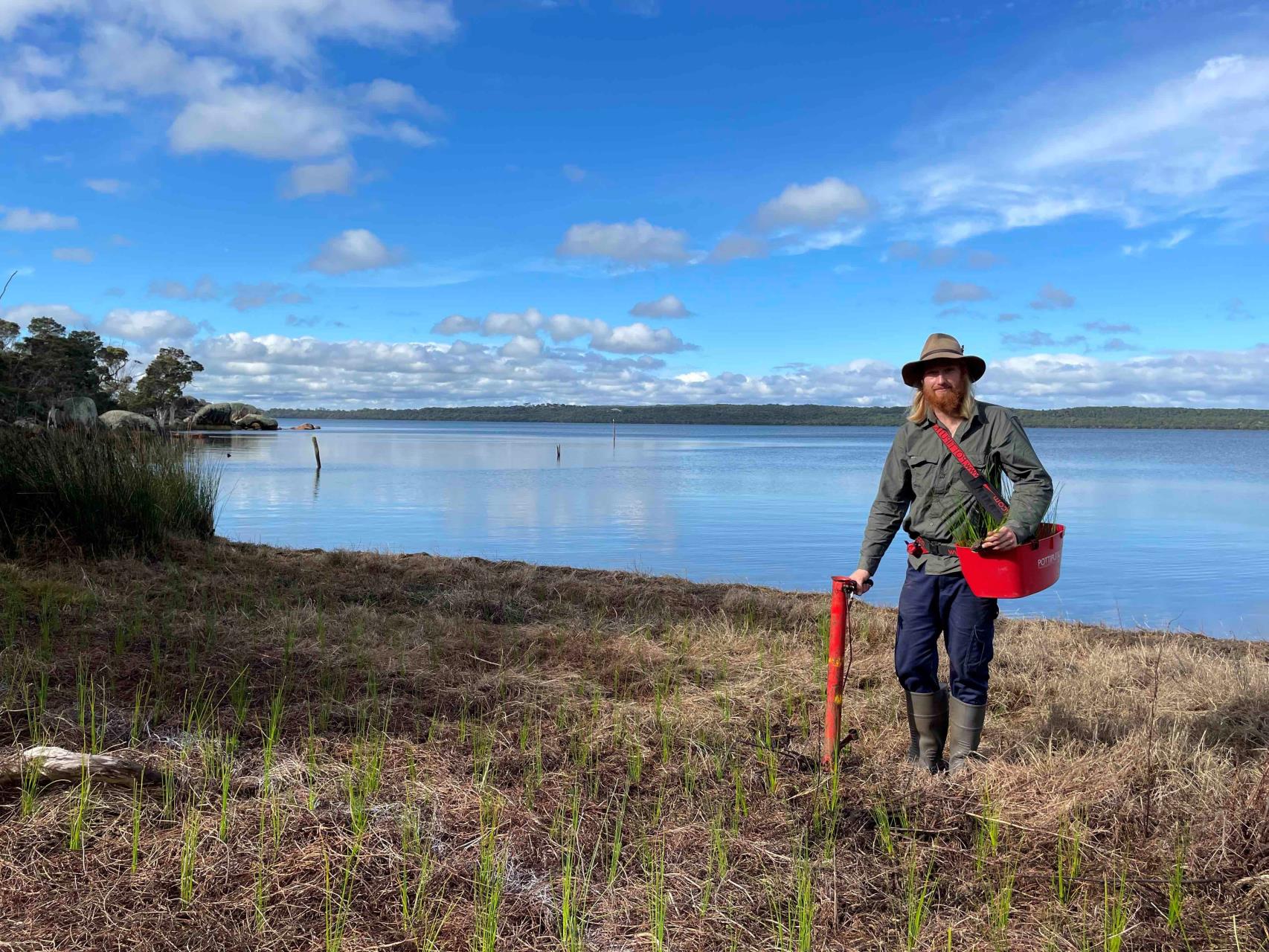Wilson Inlet
Wilson Inlet is one of 118 sites of International Significance for migratory and resident shore-birds in Australia. Swamp Woodland, including stands of freshwater paper bark (Melaleuca preissiana), form an important habitat around the banks of the Wilson Inlet. The vegetation, including rushes, sedges and paperbarks found in swampy areas around the inlet are essential for filtering fertilisers, nutrients and other pollutants from storm water runoff and for protecting against erosion. Migratory wading birds, such as the Black-winged Stilt (Himantopus himantopus), rely on the wetlands as important feeding areas. Yellow-Billed Spoon Bills (Platalea fiavipes) patrol the shallow waters of Wilson Inlet using the vibration detectors on their spatulate bill to feel for prey items and feed by day or night.

Wilson Inlet foreshore - photo captured by local film maker Craig Carter.
Waterways Collaborative Partnerships
The Shire liaises with catchment land users to ensure a landscape-wide management approach and provides funding and support to community groups and management bodies regarding wetland management and on-ground activities such as fencing and revegetation works of waterways. The Shire also has a dam construction policy which prohibits riparian vegetation clearing (Town Planning Scheme 3 Policy No.37: Dams and Water Features), to ensure continued protection of our waterways and wetland areas.
The Department of Water (DoW) is the lead agency for the coordination and delivery of outcomes in water quality and quantity, estuarine and catchment management in priority areas of WA, including Wilson Inlet. Legislatively, the Department’s head powers are provided by the Water Agencies Power Act 1984, while the primary legislative powers for waterway management in Wilson Inlet is via the Waterways Conservation Act 1976 and the Rights In Water and Irrigation Act 1914.
Effective delivery of this activity relies on working partnerships with a range of Government and community stakeholders in the coordination and delivery of estuary, catchment and waterway management. The Shire of Denmark is a key stakeholder in management of the Inlet: it provides Government with information on community wishes and adds value to management through community input into agency decisions and ensuring the community is made aware of Government initiatives relating to the Inlet.
Please click on the following image to access a short film of Noongar Elder Wayne Webb speaking on country entitled A Pibulman Wadandi Man's Connection to Country. Filmed and edited by Craig Carter (Earthrise Production) on behalf of the Wilson Inlet Catchment Committee (WICC), part funded by the Shire of Denmark as part of the Noongar Elders Gathering Wandju Wandju Koorabup Beelia in May 2021 celebrating indigenous peoples' knowledge of waterways and connection to country:
Wilson Inlet Foreshore Revegetation Projects
The Shire and Wilson Inlet Catchment Committee are working on several revegetation projects along the Wilson Inlet foreshore to re-establish illegally cleared native vegetation. The clearing is occurring for a variety of reasons including to obtain views, clearing for fear of bushfire, and for access to recreational trails and to the inlet foreshore.
The Shire in collaboration with Wilson Inlet Catchment Committee (WICC) are working towards re-establishing the native fringing vegetation in foreshore reserve areas including adjacent to the old Little River Caravan Park (Reserve 34742), and along the Little River Walk Trail with funding provided by the Shire of Denmark to help to implement actions from the Wilson Inlet Management Strategy.
WICC is excited to be undertaking the rehabilitation work in the foreshore reserves which has suffered years of illegal clearing to facilitate views and access to the inlet. Introduced weed species such as kikuyu grass have become a major issue in the area and uncontrolled access to remaining healthy vegetation is also placing pressure on the foreshore vegetation.
The foreshore fringing vegetation of the inlet plays a number of important roles for the health of this important ecosystem at our community’s doorstep. It acts as a buffer, assists in the filtering of pollutants and nutrients, helps stabilise the soil and reduce bank erosion, provides habitat for native fauna and adds value to the visual amenity of the inlet’s landscape.
The ongoing revegetation project uses locally sourced plant material from the inlet foreshore and is aimed at restoring the naturally occurring vegetation along the water’s edge which has been cleared in many areas without permits. Working with the Shire, Habitat Tree Farm and students from the Denmark College of Agriculture, WICC is growing more than 14,000 native local provenance seedlings to re-establish the fringing vegetation.
The revegetation collaboration involves local volunteers and students from WA College of Agriculture, Denmark, and Great Southern TAFE who get stuck into tasks from site preparation and weed control, to seed collection, propagation and planting. A recent community planting day near the Cove along the Wilson Inlet engaged more than 30 community volunteers of all ages from young children to the elderly with up to 7800 local provenance native seedlings planted.
Strategic planting above and below the highwater mark will ensure the survival of the re-vegetation work which may need to weather prolonged inundation.
Site preparation began in May 2021 to remove the kikuyu grass with planting taking place in June 2022 with the community invited to plant trees alongside Shire and WICC. This planting is the first stage of a number of revegetation projects that the Shire is facilitating along the Wilson Inlet over the coming years in an effort to re-establish these disturbed illegally cleared areas along the foreshore.
Native vegetation clearing on Shire land is prohibited under the Shire of Denmark Local Property Law and Wilson Inlet Foreshore Policy and can carry hefty fines under the Environmental Protection Act (1986), therefore property owners should be mindful of their property boundaries before undertaking any disturbance activities. The Shire is undertaking a three-pronged approach to illegal native vegetation clearing activities, involving a combination of education campaigning, revegetation efforts, and punitive measures in the form of infringements and remediation orders.

Revegetation Plan for Wilson Inlet foreshore reserve

Shire Revegetation Assistant Terran Ablett
Waterways Documents
Conserving the Wetlands of Denmark brochure
Migratory and Resident Shorebirds of Wilson Inlet poster
Wilson Inlet Management Strategy 2013 - 2022
Wilson Inlet Sandbar opening protocol
Wilson Inlet Sandbar Opening Decision Making Framework_2022
Irwin Inlet Sandbar opening protocol
Parry Inlet Sandbar opening protocol
Wilson Inlet Management of Sandbar Opening Decision Tool
Wilson Inlet Cultural Management Plan (2008)
Wilson Inlet Foreshore Flora Survey (March 2011)
Wilson Inlet Foreshore Flora Survey (Sept 2016)
Wilson Inlet Foreshore Flora Survey (May 2020)
Wilson inlet Foreshore Flora Survey (May 2021)
Website Links:
Wilson Inlet Catchment Committee
Department of Water and Environmental Regulation - river water level monitoring for the Denmark River at the Old Railway Bridge
Department of Water and Environmental Regulation - water licensing
https://estuaries.dwer.wa.gov.au/estuary/wilson-inlet/estuary/the-bar/